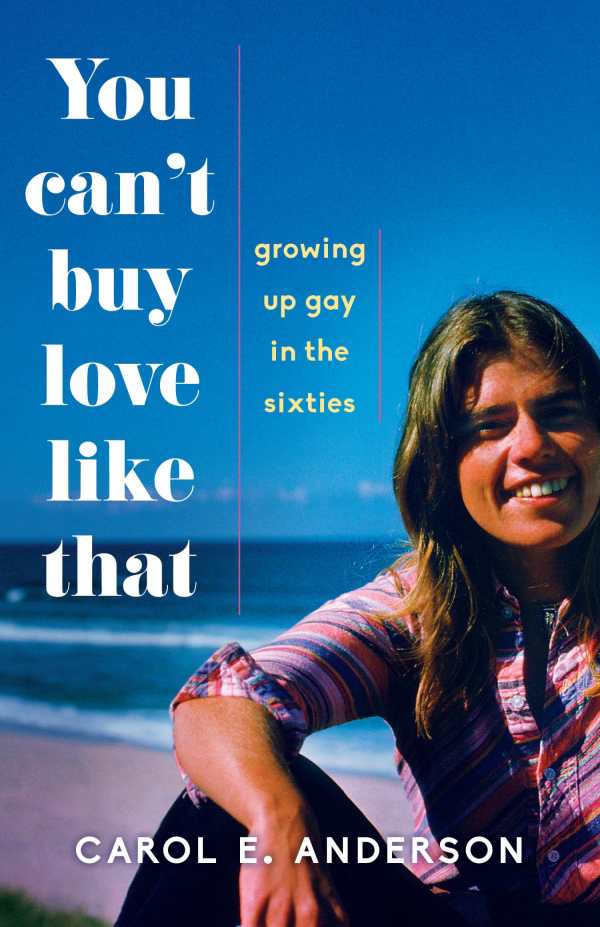You Can't Buy Love like That
Growing up Gay in the Sixties
Smart and sensual, You Can’t Buy Love Like That captures a woman coming into her own in a time of tremendous social change.
Carol E. Anderson’s You Can’t Buy Love Like That: Growing Up Gay in the Sixties is an immediately engaging memoir. With vivid scenes and precise emotional detail, Anderson explores how societal pressures and her strict Baptist upbringing held her back from coming out.
The text analyzes Anderson’s major relationships and life changes, as well as the driving emotional and societal factors behind her choices. Even as her confidence flourished in other areas, Anderson, as a young woman, found that she was plagued by an unfair shadow. She could not claim confidence around expressing her sexual orientation.
Anderson thoughtfully explores the thrills and dilemmas of secret crushes, and the pain of mourning relationships that she couldn’t make public to begin with. The text also makes note of the casual, hurtful biases that informed Anderson’s choices, even when she was stifling her attractions.
The narration takes real pleasure in recalling the particulars of scenes, down to period clothes; the other actors in the text come through as clearly as if they were captured on Kodachrome. The emotional impressions left by others are also rendered with clarity, so that Anderson’s struggles—longing for girlfriends, trying to make it work with young men—are vividly conveyed.
The book’s tone is youthful, though sometimes it is so casual and friendly that its breeziness inhibits the immediacy of the events being recalled. Even heartbreaks are softened by that voice.
Though this is Anderson’s memoir, it’s also the story of her mother, an always present, but not especially focal, figure. Her mother comes to exemplify 1960s America: She insists that they both pursue weight loss pills, and wrestles with the church-instilled perceptions that inform her initial take on Anderson’s homosexuality. She also comes across as independent, fun-loving, and tough—the family breadwinner since Anderson was four. As both women age, Anderson’s mother becomes more present in the narrative, and her independence shines on in her daughter. Conversely, Anderson’s brother is barely present in the text at all prior to her college years.
The more depth that Anderson gives to scenes, the more captivating they are. Fully related incidents are well chosen to illustrate major moments or looming themes. Developments such as when she comes into feminism and pot smoking in her mid-twenties—her “gay adolescence,” she quips—feel hard-earned in a text that shows her bottling up so much in the preceding years.
Mainly chronological, the text sometimes slips back into earlier memories. The device is rarely confusing.
Smart and sensual, You Can’t Buy Love Like That illustrates the pain of keeping feelings private, but also captures how, amid social change, Anderson found the courage to live her own big-hearted life.
Reviewed by
Meredith Grahl Counts
Disclosure: This article is not an endorsement, but a review. The publisher of this book provided free copies of the book and paid a small fee to have their book reviewed by a professional reviewer. Foreword Reviews and Clarion Reviews make no guarantee that the publisher will receive a positive review. Foreword Magazine, Inc. is disclosing this in accordance with the Federal Trade Commission’s 16 CFR, Part 255.

